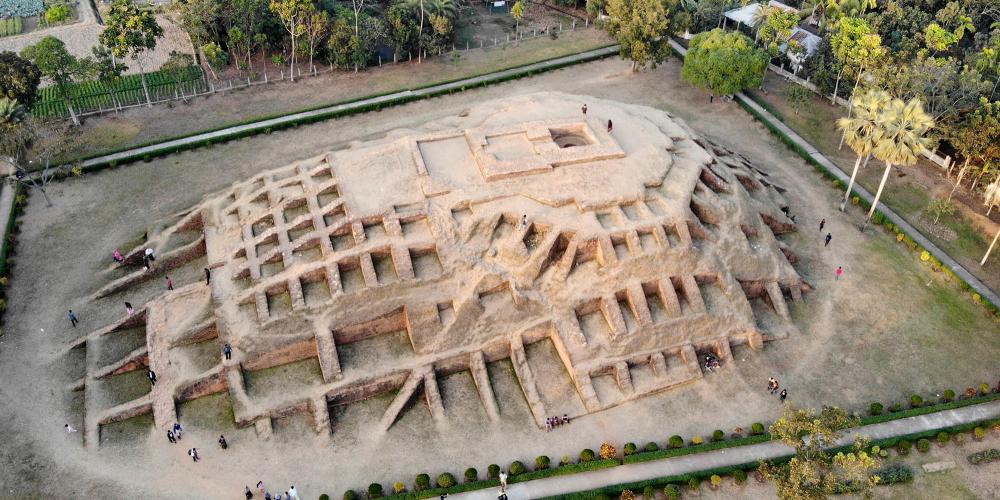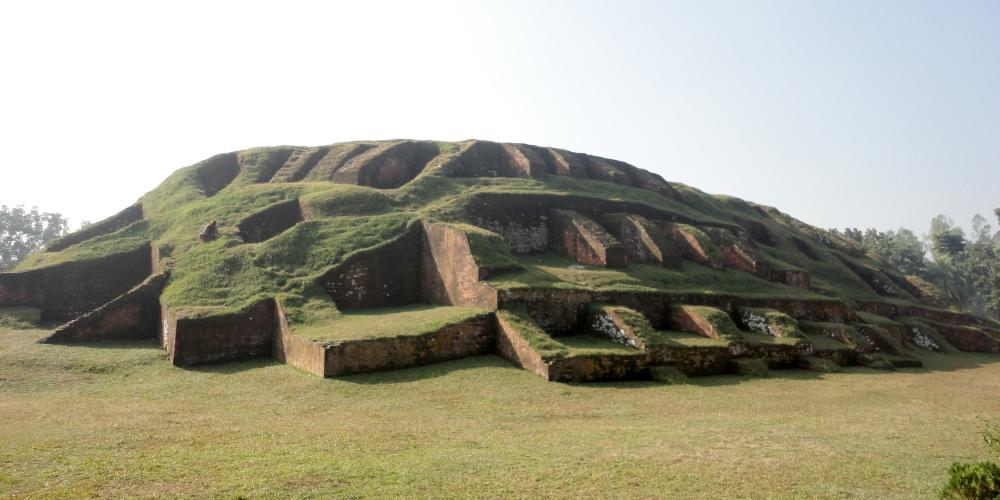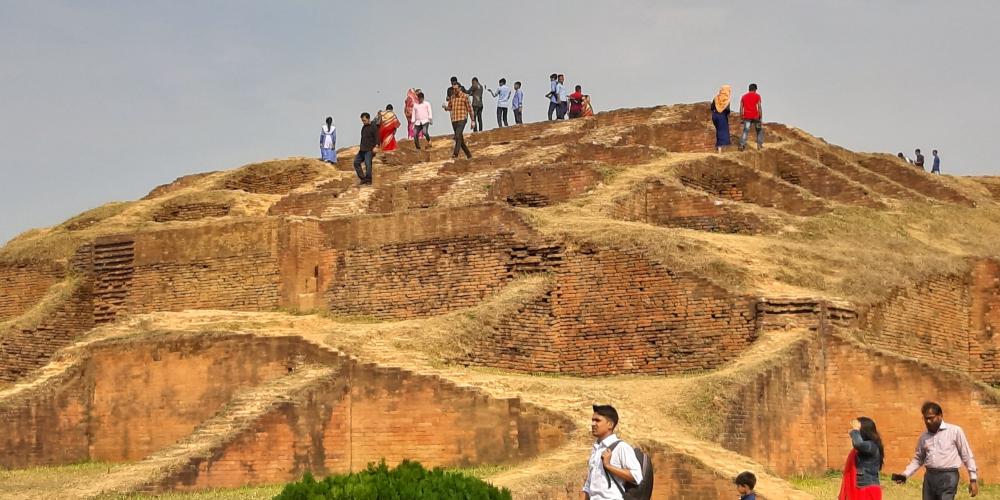Gokul Medh

About two kilometres from the ancient citadel of Mahasthangarh, surrounded by rice fields and a small friendly local village, lies Gokul Medh. It is an ancient Hindu temple belonging to Lord Shiva.
Gokul Medh is an excavated mound which revealed a large shrine or Buddhist stupa plinth built in a terraced cellular style of construction This way of building allowed builders to erect sacred buildings to an imposing height. Having important buildings above flood level was particularly useful for the loose soil of Bengal.

The plinth was built of 172 rectangular cells packed solidly with earth and arranged in gradually rising tiers to support a towering polygonal shrine. The cellular style of terraced construction, consisting of multiple buttress-walls erected side by side to support a central structure on top, is a very significant feature in the architecture of ancient Bengal.

What you can see today would have just been the base, with a shrine or stupa on top. In the 11th or 12th century, a Shiva temple with a porch would have been erected here instead.
Gokul Medh
9am – Sunset
International visitor: Tk 100
Bangladesh national: Tk 20




